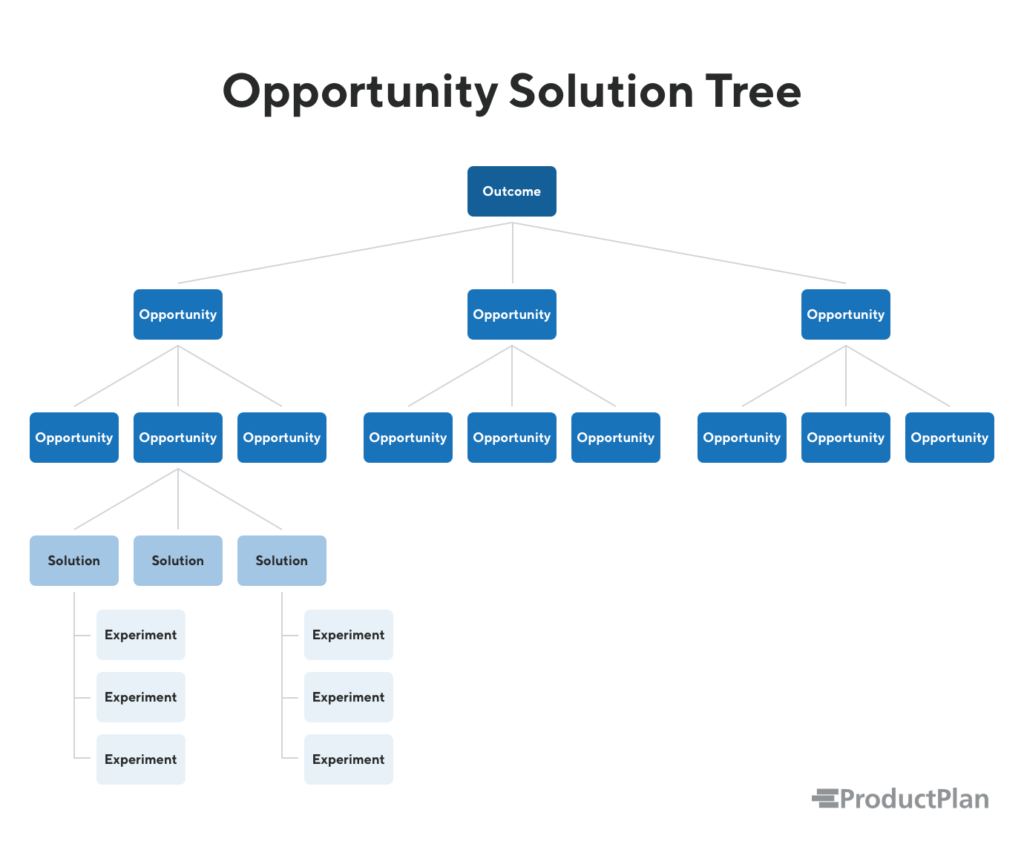What is an Opportunity Solution Tree?
An Opportunity Solution Tree (OST) is a visual aid that helps enable the product discovery process through the non-linear organization of ideation flows, experimentation, and identification of gaps. Simply put, an OST is a visual plan for how you will then reach a clear desired outcome.

What is the History of an Opportunity Solution Tree?
Teresa Torres, a product discovery coach, created a type of map called the Opportunity Solution Tree, or OST, in 2016 as a way to help product teams streamline the product discovery process and keep track of their continuous discovery journey.
Torres describes OSTs as “a simple way of visually representing how you plan to reach the desired outcome. It also helps make implicit assumptions explicit. Opportunity solution trees help you to navigate opinion battles, frame your decisions as ‘compare and contrast’ rather than ‘whether or not,’ align around a shared understanding, and communicate how you’ll reach the desired outcome.”
Read more about the origin of OSTs and how they’re changing the way product teams work.
How Do You Create an OST?
Here are the four steps to creating an Opportunity Solution Tree:
Step 1: Identify the desired outcome: Narrow your goal to a single metric you want to improve (e.g., revenue, customer satisfaction, retention, etc.).
Step 2: Recognize opportunities that emerge from generative research: Dig in deep to understand the needs and pain points of your customers. Keep in mind that pain points are opportunities!
Step 3: Be open to solutions from everywhere: The caveat, however, is that a potential solution must directly link to an opportunity—otherwise, it’s just a distraction from the primary goal of your OST.
Step 4: Experiment to evaluate and evolve your solutions: Now, it’s time to test a single solution with sets of experiments.
An OST can help you:
- Stay organized through the ideation phase.
- Enable outside input to flow into the product discovery process. It prevents you from creating noise or veering off course from the metrics that matter most.
- Build the concept of experimentation into the roots of your future product (and keep track of it).
Download Product Success Metrics ➜
Along your continuous discovery journey, refer back to your OST when you:
- Find yourself struggling to prioritize a backlog full of ideas
- Have a clear desired outcome, but the ideas in the backlog are muddled
- Fixate on one opportunity, one solution, and one experiment at a time
- You’re considering too many opportunities, solutions, and experiments at once
Want to learn more about prioritization? Watch the webinar, below:
Related terms: Customer Development, Continuous Delivery, Product Development Roadmap, Product Tree.
Need to prioritize all of your ideas before putting them onto your roadmap?